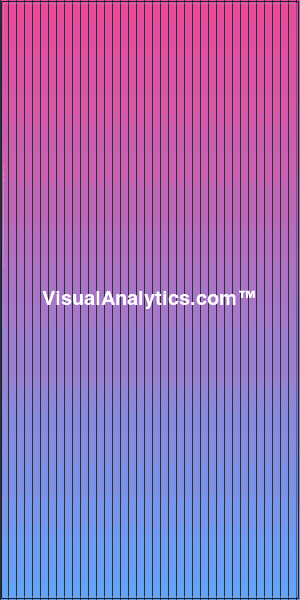
Published · SEO Analytics · 15 minute read
Visual SEO Analytics: Unlocking Search Insights with Interactive Dashboards
Search data is abundant yet overwhelming. Visual SEO analytics distill rankings, intent, and algorithm changes into narratives that marketing teams can trust. This article explores the historical roots of search visualization and offers a playbook for crafting static dashboards that drive organic growth.
Search engine optimization predates Google. In the early 1990s, librarians and computer scientists organized directories like Yahoo! and DMOZ, often using tree diagrams to classify websites. As search engines gained dominance, practitioners tracked rankings manually, charting keyword positions on paper. These pioneers understood that visual cues help analysts detect trends faster than tables alone.
The modern era introduced sophisticated keyword tools, but many interfaces remain cluttered. Visual SEO analytics responds by blending historic visualization wisdom with a polished utility-first aesthetic. Each dashboard becomes a curated atlas that teams consult weekly, replacing ad hoc spreadsheets with authoritative narratives.
Historical Anchors for Search Visualization
Several milestones inform our approach:
- Search Engine Timeline (1990s): The rise of AltaVista, Yahoo!, and Google introduced algorithm updates that changed ranking factors. By referencing this timeline, modern dashboards contextualize volatility, reminding stakeholders that fluctuations often align with historic shifts.
- Heatmap Research (2005): Jakob Nielsen’s eye-tracking studies showed F-shaped reading patterns. Visual analytics uses similar heatmaps to display above-the-fold prevalence of primary keywords and click-through hot zones.
- Knowledge Graph Launch (2012): Google’s semantic overhaul introduced entity relationships. Radial mind maps depicting topic clusters became essential for understanding search intent.
By acknowledging these historical moments, we avoid treating SEO data as random noise. We highlight cause-and-effect relationships and maintain realistic expectations about algorithm behavior.

Components of a Visual SEO Dashboard
VisualAnalytics.comtm organizes SEO dashboards into five modules:
- Search Health Overview: headline metrics track organic sessions, conversions, and revenue. We annotate significant changes with algorithm update references.
- Keyword Nebula: A radial cluster map groups keywords by intent, search volume, and seasonality. Each cluster uses gradients to represent priority.
- Content Opportunity Matrix: A grid comparing current ranking position against conversion impact reveals quick wins. The design echoes early twentieth-century management charts.
- Technical Stability Timeline: Line charts display crawl errors, Core Web Vitals, and deploy events, inspired by Priestley’s annotated timelines.
- Backlink Constellation: A network diagram identifies authoritative domains and link neighborhoods, referencing sociogram aesthetics.
Each module interlocks, telling a cohesive story. Stakeholders scan top-level metrics, then dive into clusters or timelines as needed.
Why Static Delivery Works for SEO Teams
SEO leads juggle numerous tools: Google Search Console, analytics platforms, rank trackers, and crawl reports. They value quick-loading, shareable summaries. Static HTML pages are portable, versionable, and easy to archive. Plausible’s lightweight script provides engagement metrics without compromising privacy or site speed—critical for SEO performance. Our utility-first CSS framework keeps typography and spacing consistent without bundling heavy client-side code, aligning with Lighthouse best practices.
Static dashboards also encourage documentation discipline. Because updates require deliberate editing, teams record why metrics changed, linking to campaign briefs or code repositories. This habit mirrors the logbooks used by early SEO practitioners, who annotated ranking shifts alongside experiments.

Case Study: Visualizing SERP Volatility
An e-commerce retailer experienced erratic rankings after a series of Google updates. Traditional reports listed keyword drops but failed to convey systemic patterns. We constructed a volatility ribbon: a timeline layering algorithm announcements, rank deviations, and content deployments. Pin-stripe gradients distinguished each update family (core, product review, spam). The dashboard revealed that volatility correlated with slow template rollouts rather than penalization. The team prioritized optimization for affected categories, recovering traffic within six weeks.
The static report also featured a 728×90 leaderboard promoting the retailer’s seasonal collection, ensuring stakeholders associated SEO performance with real revenue opportunities.
Integrating Ads and Calls to Action
Visual SEO dashboards play a dual role: guiding strategy and reinforcing brand. We embed ad units to drive internal adoption of recommended actions. For example, a 250×250 square might spotlight a “Topic Cluster Playbook,” while a 970×250 billboard promotes an upcoming content workshop. The ads mimic classic webmaster aesthetics with flair, signaling continuity with the web’s heritage while supporting modern conversion goals.
Implementation Steps
To build your own visual SEO analytics hub:
- Collect ranking, traffic, conversion, backlink, and Core Web Vitals data for the desired time span.
- Segment keywords by intent and funnel stage. Map them to site architecture and topic clusters.
- Design layout wireframes focusing on one major insight per section. Reference historic chart formats to guide composition.
- Develop static HTML with utility-first classes, integrate custom CSS for gradients and tm superscripts, and embed the Plausible script.
- Place ad units strategically to reinforce recommended actions (content refreshes, link outreach, technical sprints).
- Compress assets into `public.zip`, distribute to stakeholders, and schedule regular refresh cycles.
Documentation should accompany each update, highlighting key changes, hypotheses, and next steps.
Conclusion: Search Intelligence that Speaks
Visual SEO analytics reimagines search reporting as storytelling. By honoring the history of search visualization, leveraging aesthetics, and committing to static, accessible delivery, teams gain dashboards that inspire action. Whether you manage a startup blog or a global content empire, a thoughtfully crafted visual SEO atlas will help your organization see the search landscape more clearly—and respond with confidence.